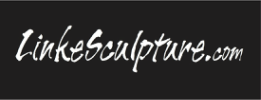 Dr. Werner Heisenberg
Dr. Werner Heisenberg So, I was out by Evergreen Lake trying to walk off a few pounds when I spotted a couple approaching me on the trail. She held his arm as they tender-footed the light snow. Every step was a giggle, so I knew they were courting. His heroic arm braced her as she beamed her fascination in return.
Suddenly the laughter ceased. I was spotted.
"Good morning," they said as one. Happily, they did not add "Mister."
"Good morning," I replied as I passed, blissfully remembering what courting was all about. Then I thought about Heisenberg.
Those of us who suffer from left-brain poisoning do that. Werner Heisenberg discovered a quantum mechanics principle requiring half a Greek alphabet to write down. It applies to small particles and the difficulty of measuring them. Seems you can know the location or momentum of an atomic particle, but not both.
How does this relate?
Well, I prefer the right-brain interpretation of the Heisenberg Principle (sorry, Dr. H). The act of observing something changes what is observed. Philosophers and psychologists love this. I watched it on the trail. Whether the couple changed behavior because of me or I changed my observation because of them is endlessly debatable. But something changed. It always does.
And then the ghost of Dr. H appeared a quarter mile later in the form of a different couple, this time accompanied by a smallish photographer. They were on a lower trail by the lake snapping what must have been engagement photos. Smallish Photographer was barking orders and directing the holding of hands and how to walk in step. The couple must have been very in love because they gritted their teeth and rolled their eyes in unison. There was born the Linke Principle: The act of observing something intensely destroys entirely what is observed.
So, how does this relate to my sculpture? Easy.
Genuine emotion must be remembered from the flash of those unguarded moments when the observee is oblivious. "Smile for the camera." Never. "Pose like this." No chance. "Act natural." Won't happen.
Great sculpture comes out of that frozen moment when we are ourselves and nobody's watching. Or at least, we don't see them. Chasing and sculpting that moment challenges me and fills my every day. Thanks Dr. H.
Suddenly the laughter ceased. I was spotted.
"Good morning," they said as one. Happily, they did not add "Mister."
"Good morning," I replied as I passed, blissfully remembering what courting was all about. Then I thought about Heisenberg.
Those of us who suffer from left-brain poisoning do that. Werner Heisenberg discovered a quantum mechanics principle requiring half a Greek alphabet to write down. It applies to small particles and the difficulty of measuring them. Seems you can know the location or momentum of an atomic particle, but not both.
How does this relate?
Well, I prefer the right-brain interpretation of the Heisenberg Principle (sorry, Dr. H). The act of observing something changes what is observed. Philosophers and psychologists love this. I watched it on the trail. Whether the couple changed behavior because of me or I changed my observation because of them is endlessly debatable. But something changed. It always does.
And then the ghost of Dr. H appeared a quarter mile later in the form of a different couple, this time accompanied by a smallish photographer. They were on a lower trail by the lake snapping what must have been engagement photos. Smallish Photographer was barking orders and directing the holding of hands and how to walk in step. The couple must have been very in love because they gritted their teeth and rolled their eyes in unison. There was born the Linke Principle: The act of observing something intensely destroys entirely what is observed.
So, how does this relate to my sculpture? Easy.
Genuine emotion must be remembered from the flash of those unguarded moments when the observee is oblivious. "Smile for the camera." Never. "Pose like this." No chance. "Act natural." Won't happen.
Great sculpture comes out of that frozen moment when we are ourselves and nobody's watching. Or at least, we don't see them. Chasing and sculpting that moment challenges me and fills my every day. Thanks Dr. H.

 RSS Feed
RSS Feed